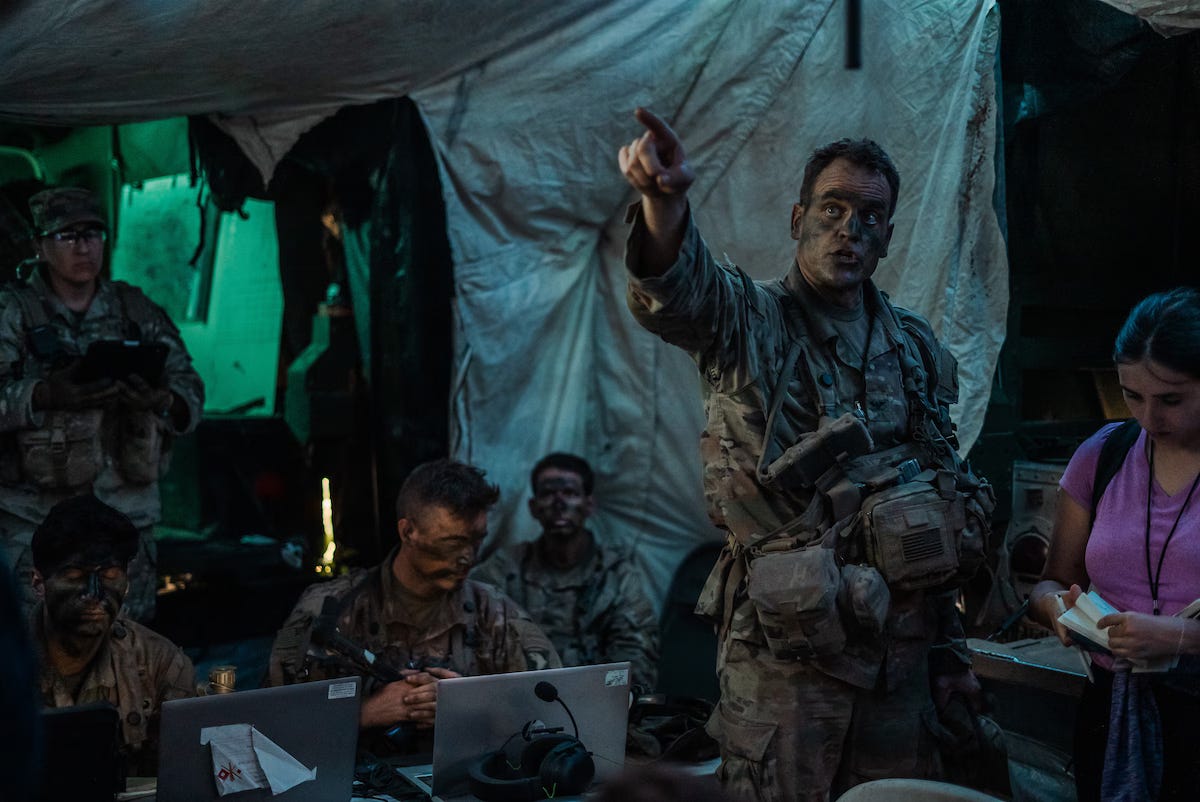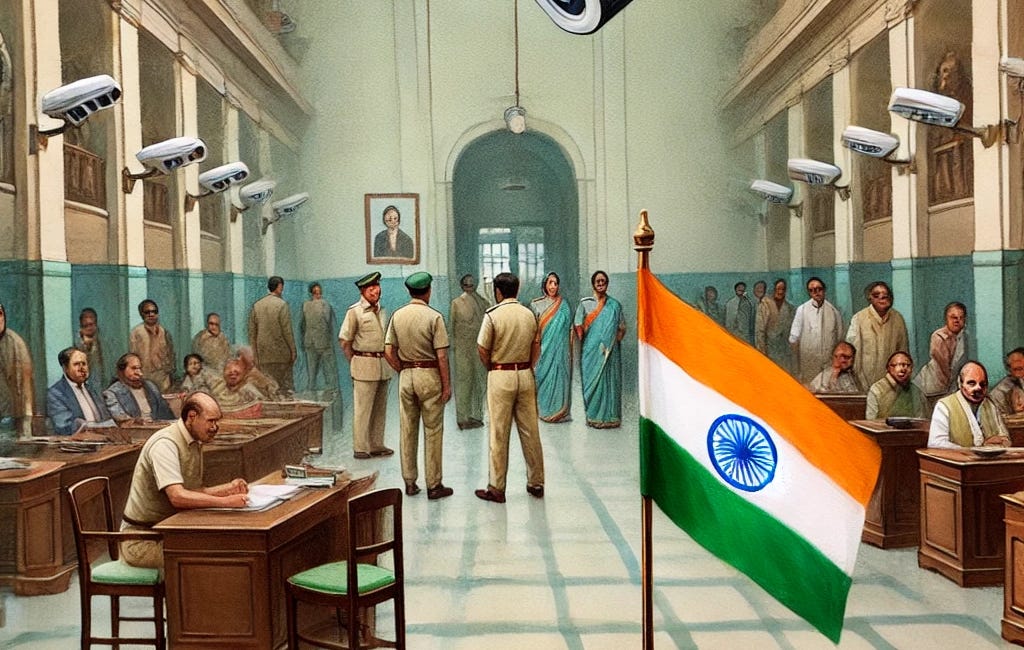The Rise of Cyber Warfare: The USA’s New Battlefield
Lessons that India's Defence and Security Experts Can Draw and What Our Tech Companies Can Aspire To.
Introduction: A New Era in Military Strategy
In the evolving landscape of global conflicts, the United States has taken significant leaps in cyber warfare, reshaping the concept of military engagement. Gone are the days when warfare was solely about boots on the ground and tanks on the battlefield. Today, the US military has shifted its focus towards utilising advanced technology to minimise human casualties, trading "robots for blood." This transformation reflects a broader strategy of employing cyber capabilities and automated systems to conduct operations that were once carried out by soldiers.
Cyber Warfare: Robots for Blood
The United States has made substantial advancements in developing and deploying cyber warfare tools that reduce the need for traditional combat. In recent years, the military has increasingly relied on robots and drones to execute missions that would otherwise endanger human lives. These technologies not only serve as a force multiplier but also allow for a more surgical approach to warfare, targeting enemy positions with precision and reducing collateral damage.
A notable example of this is the use of autonomous drones and ground robots in combat simulations, which have been designed to perform reconnaissance, deliver payloads, and even engage in direct combat. The aforementioned mantra "robots for blood" succinctly encapsulates this shift towards using machines in place of soldiers, effectively preserving human life while maintaining military effectiveness.

Camouflage and Deception: The Art of Cyber Warfare
The US military’s cyber strategy extends beyond merely deploying robots and drones. An integral part of its approach involves camouflaging the presence of cyber command centres and creating deceptive signals to mislead adversaries. This involves setting up surrogate command posts and emitting false electronic signals to confuse enemy intelligence.
For example, in high-tech combat drills, US forces have been known to deploy decoy drones that emit radio and Wi-Fi signals similar to those of actual command centres. These tactics are designed to create a fog of war in cyberspace, making it difficult for adversaries to identify and target real command structures. Such measures highlight the importance of deception in modern warfare, where battles are not only fought on physical terrains but also in the electromagnetic spectrum.
A New Theatre of War: The Cyberspace Arena
The nature of warfare has fundamentally transformed with the advent of cyberspace as a theatre of conflict. Unlike traditional battles, which unfold over hours or days, cyber battles can be fought and decided in mere microseconds. These conflicts are often invisible to the naked eye, occurring silently over networks and satellites, while appearing, to borrow a metaphor from the Indian context, "all quiet on the Western front" or even along the Himalayan borders.
In this fast-paced environment, success is determined by the ability to control information, disrupt enemy communications, and protect critical infrastructure. The US has invested heavily in developing capabilities that allow it to dominate in this domain, from cyber defence systems to offensive hacking tools designed to paralyse enemy networks.
The Indian Context: A Call to Arms in the Cyber Domain
As the United States continues to push the boundaries of cyber warfare, it is crucial for India to recognise and respond to these developments, especially given its being virtually surrounded by less-than-friendly neighbours. The shifting nature of war necessitates a corresponding change in military strategy and capabilities. With its burgeoning IT sector and growing technological prowess, India is well-positioned to become a formidable force in cyberspace. However, this requires a significant transformation in how defence technology companies operate.
Indian defence firms must evolve from merely manufacturing spare parts to developing sophisticated software and cyber capabilities. The ability to launch cyber-attacks and defend against them will be as important as traditional military prowess in the years to come. India’s defence establishment must prioritise investment in research and development of cyber tools that can both protect national interests and project power across cyberspace.
Collaboration with Defence: A Model for India to Emulate
US companies such as Boeing and Elon Musk's SpaceX and Starlink are openly collaborating with the US Department of Defence, demonstrating a strong partnership between the private sector and the military. Even venerable companies like Google (Alphabet Inc.) and Metaverse work closely with both the Department of Defence and Homeland Security, albeit more discreetly. Meanwhile, listed companies like Palantir take pride in boasting that their national defence clients are their exclusive customers. This close collaboration has not only strengthened the US's cyber warfare capabilities but has also driven innovation and profitability for these companies. Similarly, Indian companies must strengthen their partnerships with governmental agencies to develop cutting-edge cyber warfare hardware and software, ensuring robust defence capabilities for the nation while also achieving profitable returns. Additionally, they could explore opportunities in seemingly innocuous but dual-purpose manufacturing, such as security cameras, a market where China currently holds a dominant position globally1.
Learning from Israel: Leveraging High-Tech for National Security
Israel’s intelligence agency, MOSSAD, has built a formidable reputation, whether feared or respected, largely due to its use of advanced hardware and software, much of which is domestically developed and not solely imported from the United States. The recent controversy surrounding their Pegasus software, which was allegedly capable of breaching the highly secure Apple iPhones and used against notable figures in India, underscores the sophistication of Israeli technology. This technological edge enables Israel to carry out precision strikes, such as neutralising a top Hamas leader in Tehran and targeting Hezbollah strongholds in southern Lebanon, alongside its ongoing operations in the Gaza Strip.
While India’s intelligence agencies, like R&AW, have become more effective, they still reportedly rely on traditional methods involving "hired" manpower, which introduces significant risks and potential for failure. To enhance its security operations, India could take a page from Israel’s book by investing in futuristic technology to neutralise anti-India training centres in Pakistan-occupied Kashmir and Myanmar, thereby improving efficiency and reducing reliance on high-risk human operations.
In Summary: Preparing for the Future of Warfare
In conclusion, as global military dynamics shift towards cyber warfare, nations must adapt to the changing nature of conflict. The United States has demonstrated how technology can be leveraged to minimise casualties and maximise strategic advantage. India, too, must up its ante in this new theatre of war, where battles are fought in microseconds. By investing in cyber capabilities and embracing a forward-thinking approach, India can ensure it is not left behind in the rapidly evolving domain of modern warfare. The future of military conflict will be decided in cyberspace, and the time to prepare is now.






….India has not yet fully developed the defence industry in respect of traditional warfare. Last week itself, the government has announced to invest more than one lac crore to upgrade defence technology /industry in the country. The initiative for advancing Cyber warfare may still be far away for consideration by our defence establishment. Moreover, our establishments fail to promote technical expertise in the very first instance and wake up later to try to catch up others who by then would be in their advanced stage of development…..